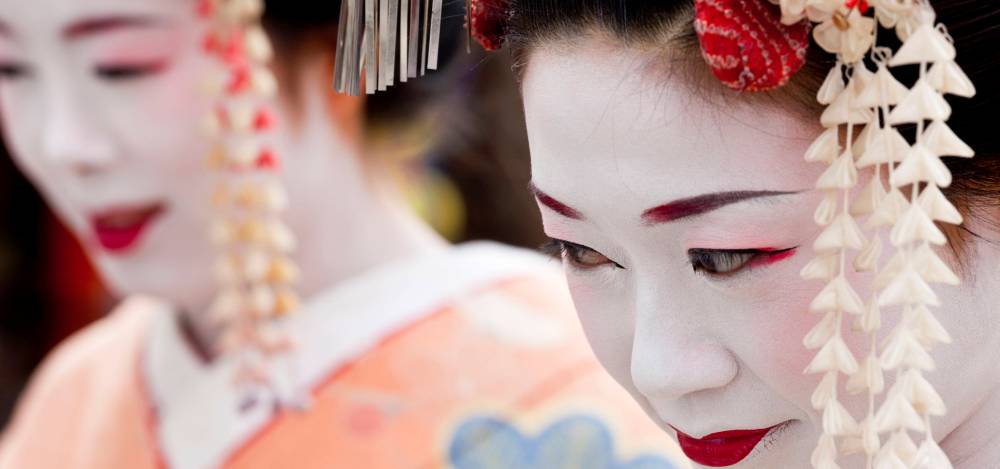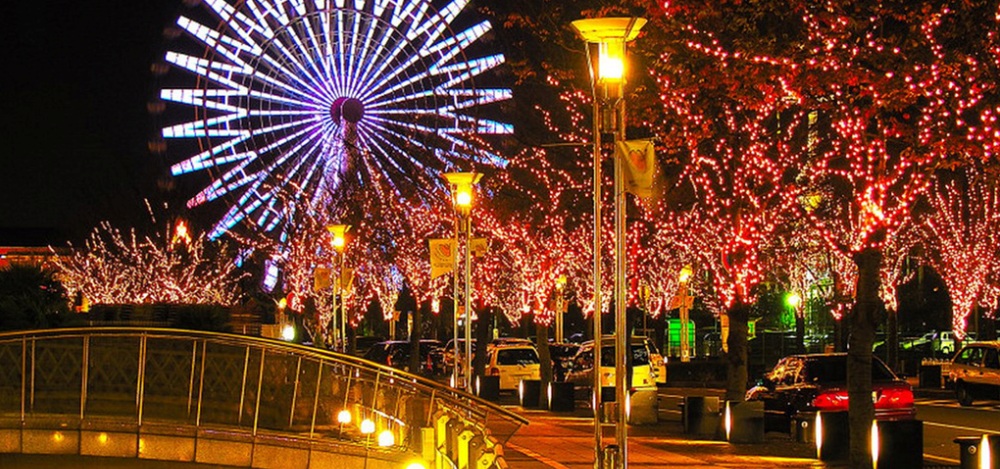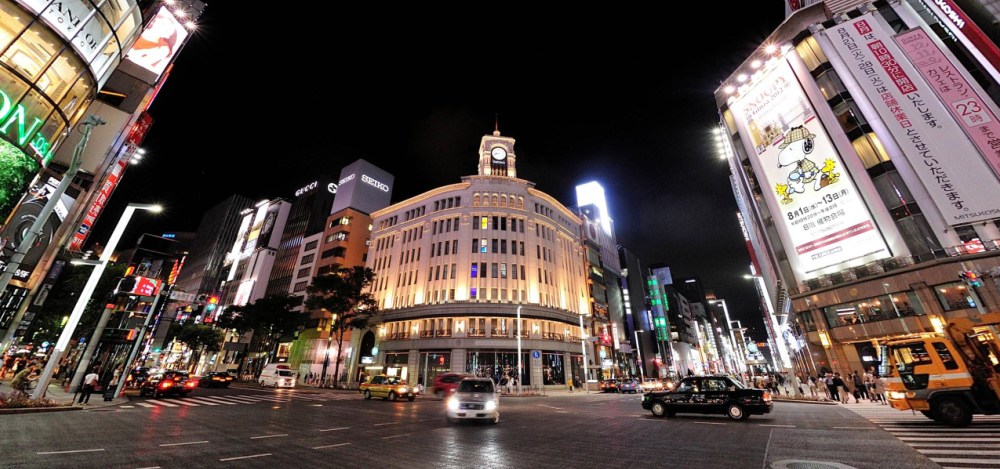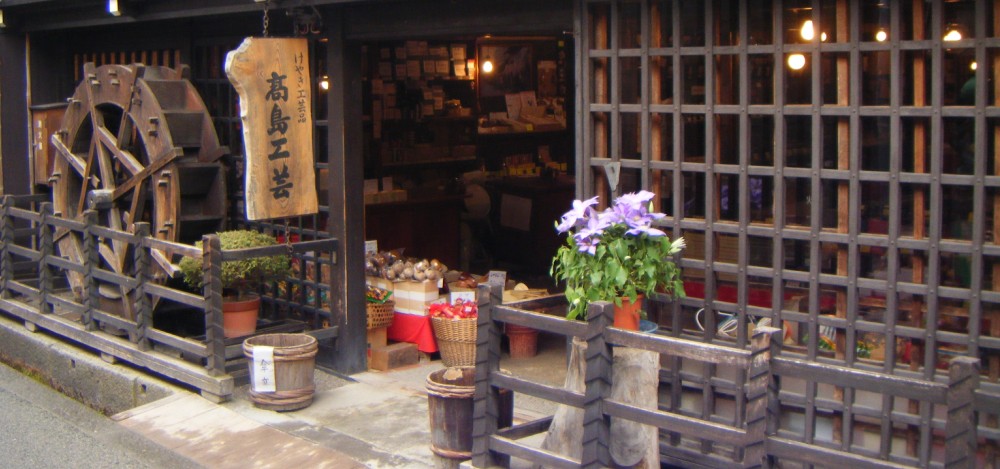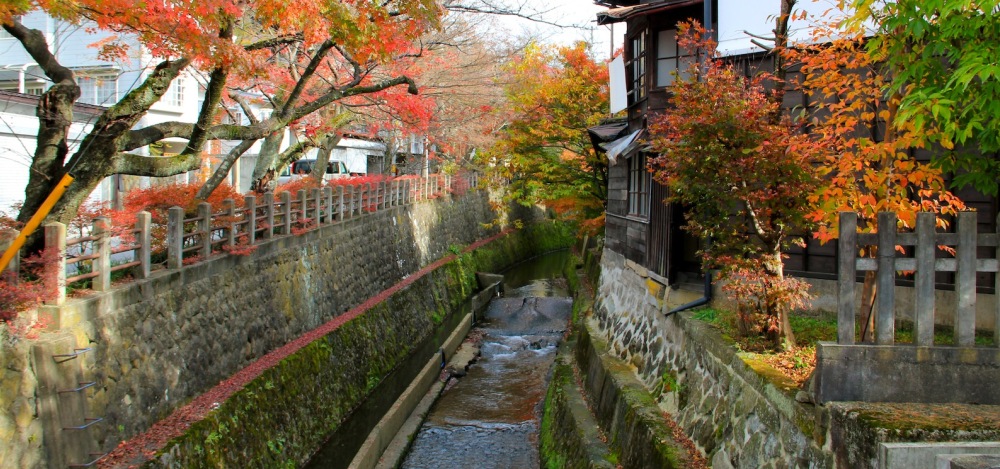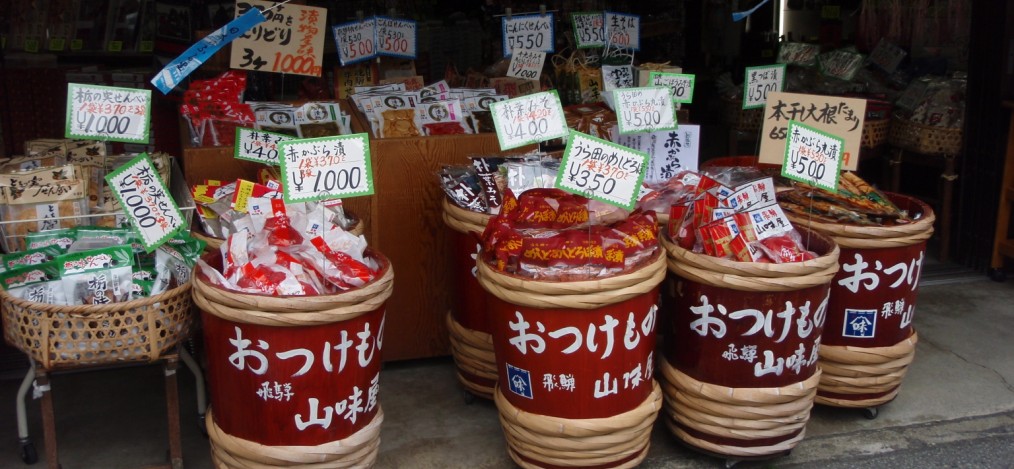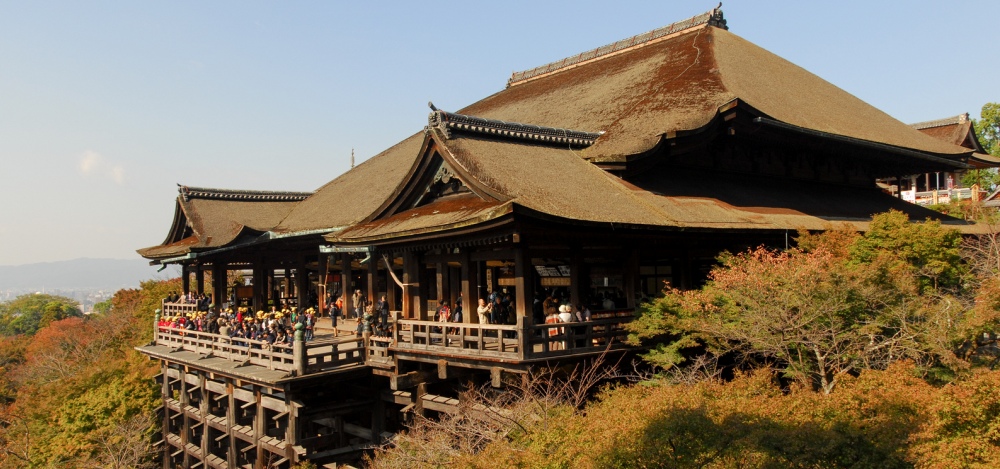"A Journey Through the Heart of Japan"
Day 1, Tokyo
Upon arrival at Tokyo's Narita International Airport you will be met by your personal concierge and escorted to your deluxe hotel. Each of our recommended properties is centrally located giving our clients easy access to excellent restaurants, exclusive shopping and fascinating areas in which to take a leisurely walk.
Day 2, Tokyo
We begin our exploration of Tokyo in shitamachi, the "downtown" merchant district of the city and an area that remains in many ways as it was during Edo times. After visiting Asakusa's Senso-ji temple, the heart of shitamachi, we will stroll through adjoining neighborhood streets where traditional craftsmen continue to ply their trade as they have done for hundreds of years.
On the way back to your hotel we will take a stroll through the Ginza, Tokyo's equivalent to New York's Fifth Avenue and at one time the most expensive parcel of real estate in the world.
This evening we begin our culinary journey through Japan, which will be one of the highlights of your trip. From little known neighborhood Japanese restaurants that serve exquisite cuisine to world-renowned French and Italian restaurants, Tokyo offers the finest selection of indigenous and international dining experiences in the world.
Day 3, Tokyo
A stay in Tokyo would not be complete without a visit to Tsukiji, the largest fish market in the world selling over 400 different types of seafood and more than 700,000 metric tons handled every year. From Tsukiji it is but a brief journey to the Imperial Palace.
Following lunch we head to Meiji Shrine. Nowhere can the blend of modern and traditional that make up Tokyo today be better seen than in the juxtaposition of Meiji-jingu,
A brief walk from Harajuku lays Tokyo's fashionable Aoyama district and one of the city's unique treasures, Nezu Art Museum. Aoyama is a great place for people watching and following lunch at one of its outdoor cafes we will head over to Nezu.
Day 4, Tokyo
Today, you can walk through the streets of Tokyo with a well-respected architect while examining the city's modern architectural heritage, explore Tokyo’s fashion culture with a local design consultant, experience sumo wrestling first hand in the environs of a sumo stable, or study the subtleties of Japanese sake at an intimate izakaya or Japanese pub with a rice wine connoisseur.
Day 5, Takayama
We depart Tokyo this morning for Takayama, a living museum rich with charm located in the heart of central Japan. Originally a castle town established in 1504 by the Kanamori clan, the daimyo or local rulers of the mountainous Hida region, Takayama, standing at the crossroads of several important trade routes, grew to become an important cultural center with a prosperous merchant class.
Day 6, Takayama
Takayama is ideal for exploring by foot and we commence our journey through Takayama with a visit to the colorful morning market where farm women from the surrounding countryside gather each day to sell fresh vegetables and flowers as they have done for over 200 years. From the market it is but a brief walk to the Takayama Jinya, Japan’s only existing provincial government office of the Edo Shogunate, which ruled the country from 1600 to 1868.
Day 7, Shirakawa-go and Kanazawa
This morning we depart Takayama by car for Kanazawa, one of Japan’s foremost castle towns, stopping en-route in the World Heritage Site of Shirakawa-go, a cluster of hamlets over 800 years old.
Day 8, Kanazawa
A journey to Kanazawa is like stepping back in time, for Kanazawa retains a sense of antiquity that is unique in Japan.
Day 9, Kanazawa and Kyoto
This morning, before departing for Kyoto, we will visit Kanazawa’s renowned Omichi Market, home to over 200 shops and stalls selling a wonderful variety of deliciously tantalizing local fish and vegetables. Following our stay in Kanazawa, we will travel by express train on a two and a quarter hour journey to Kyoto. Upon alighting from the train and leaving the station, Kyoto will appear at first blush to simply be a modern city. First impressions however can be deceiving, for Kyoto is the cultural heart and soul of Japan.
Day 10, Kyoto
While we strive to create a unique experience for each of our clients, there are five sights in Kyoto that are representative of the city’s religious and cultural heritage, and which we believe are a must for any visitor. Today, we will visit:
Kinkakuji
Ryoanji
Sanjusangendo
Kiyomizudera
Nijo Castle
Day 11, Kyoto
Our second day in Kyoto will be spent visiting the world renowned I.M. Pei designed Miho Museum; a stunning architectural masterpiece built in harmony with the surrounding countryside located about one hour by car outside of Kyoto or exploring some of the ancient capital’s other wonderful heritage sites.
Day 13, Kyoto/Osaka
Depending on the time of your departing flight, your personal concierge will help you make arrangements for your final morning in Kyoto.
Day 1, Tokyo
The beauty of Tokyo lies in its individual neighborhoods and in many ways Tokyo is the largest, most exciting village in the world. From dining at intimate back-street restaurants that only a local would know to meandering through pathways reminiscent of a bygone era to exploring hidden, yet dynamic and innovative galleries, we offer our clients the opportunity to experience Tokyo as only as insider can do.
Upon arrival at Tokyo's Narita International Airport you will be met by your personal concierge and escorted to your deluxe hotel. Each of our recommended properties is centrally located giving our clients easy access to excellent restaurants, exclusive shopping and fascinating areas in which to take a leisurely walk.
Day 2, Tokyo
We begin our exploration of Tokyo in shitamachi, the "downtown" merchant district of the city and an area that remains in many ways as it was during Edo times. After visiting Asakusa's Senso-ji temple, the heart of shitamachi, we will stroll through adjoining neighborhood streets where traditional craftsmen continue to ply their trade as they have done for hundreds of years. Following our sojourn through shitamachi and lunch at one of its neighborhood restaurants, we head to the Tokyo National Museum to see the Horyuji Homatsu-kan, a beautifully designed building created by architect Yoshio Taniguchi of MoMA fame, and specifically designed to house a priceless collection of 7th century Buddhist treasures.
On the way back to your hotel we will take a stroll through the Ginza, Tokyo's equivalent to New York's Fifth Avenue and at one time the most expensive parcel of real estate in the world. If your visit happens to coincide with a weekend, the main road through Ginza is closed to vehicular traffic and the street is filled with people enjoying a leisurely afternoon stroll, which truly is an enjoyable experience to partake.
This evening we begin our culinary journey through Japan, which will be one of the highlights of your trip. From little known neighborhood Japanese restaurants that serve exquisite cuisine to world-renowned French and Italian restaurants, Tokyo offers the finest selection of indigenous and international dining experiences in the world. Access to the smaller, quintessential local restaurants that often serve the finest Japanese food is often difficult if not impossible unless one speaks Japanese. Our wealth of experience in Japan however has provided us with a network of such restaurants where the chef will treat our customers as if they are regular clientele, thereby allowing you to experience Japanese cuisine at its finest.
Day 3, Tokyo
A stay in Tokyo would not be complete without a visit to Tsukiji, the largest fish market in the world selling over 400 different types of seafood and more than 700,000 metric tons handled every year. Taking advantage of your jet lag, we will venture to Tsukiji early in the morning today to survey the market at it most frenetic and exiting time. Afterwards, we will enjoy a breakfast of the finest sushi you have ever had at one of the tiny establishments within the market.
From Tsukiji it is but a brief journey to the Imperial Palace. As one stands in front of the palace and looks at the landscape beyond with dozens of carefully manicured pine trees set against a backdrop of glistening office buildings, one can begin to appreciate how the modern and traditional in Japan blend together.
Following lunch we head to Meiji Shrine. Nowhere can the blend of modern and traditional that make up Tokyo today be better seen than in the juxtaposition of Meiji-jingu, Tokyo's premier Shinto shrine, to Harajuku, a mecca of youth culture and avant-garde shopping. After strolling through the beautiful wooded grounds of Meiji-jingu we will wander a couple of minutes down the road to Harajuku where you will have the chance to experience the essence of Japan's youth culture.
A brief walk from Harajuku lays Tokyo's fashionable Aoyama district and one of the city's unique treasures, Nezu Art Museum. Aoyama is a great place for people watching and following lunch at one of its outdoor cafes we will head over to Nezu. On the grounds of the museum, which houses one of the finest collections of Japanese screens in the world, is the most serene and beautiful Japanese garden in Tokyo, where one can experience absolute tranquility in the midst of this vibrant city.
Tokyo is a city that does not sleep and in addition to fine dining, the evening presents us with a multitude of exciting activities from which to choose. We can explore the city's cultural life at a world-class symphony or ballet, attend a performance of Noh or traditional Japanese drama at an intimate theater, watch a professional baseball game with the liveliest fans in the world, take a helicopter ride over Tokyo and if we are lucky see Mt. Fuji bathed in the glow of the setting sun or stroll though the vibrant neon lit streets of Shibuya, one of the city's main entertainment centers.
Day 4, Tokyo
We understand that our clients have a myriad of individual interests and at JapanQuest Journeys we pride ourselves on giving you access to an array of local subject matter experts. Tokyo is the capital of Japan not only in terms of government, but also with respect to everything from modern architecture, art and design to fashion, food and entertainment.
Today, you can walk through the streets of Tokyo with a well-respected architect while examining the city's modern architectural heritage, explore Tokyo’s fashion culture with a local design consultant, experience sumo wrestling first hand in the environs of a sumo stable, or study the subtleties of Japanese sake at an intimate izakaya or Japanese pub with a rice wine connoisseur. These and many other special experiences are available to match your interests. Alternatively, you may choose to spend the day taking an excursion by car to Nikko, a beautiful mountainous region dotted with temples and shrines located two hours north of Tokyo or to Kamakura, the site of Japan's first Shogunate and several exquisite Zen Buddhist temples located about one hour south of the city.
Day 5, Takayama
We depart Tokyo this morning for Takayama, a living museum rich with charm located in the heart of central Japan. Originally a castle town established in 1504 by the Kanamori clan, the daimyo or local rulers of the mountainous Hida region, Takayama, standing at the crossroads of several important trade routes, grew to become an important cultural center with a prosperous merchant class. It is the remnants of this merchant class and the well-preserved homes and shops that they left behind that brings us to Takayama today. For it is here that one can best catch a glimpse into the Japan of a bygone era. Takayama is a very quaint town and quintessentially Japan.
Upon arrival at Takayama station, you will be escorted to a beautiful ryokan or Japanese inn. We have a favorite inn, the Wanosato, located in the countryside approximately twenty minutes outside of town. While you do have the option of staying in the Hotel Associa, Takayama’s finest western style property, which is located in the hills overlooking town, we wholeheartedly recommend that you spend at least one of your two nights in Takayama at a Japanese inn.
A stay in a ryokan can best be described as a quintessential cultural experience of remarkable serenity. Relax in the confines of a beautiful tatami room and its accoutrements, look out at an exquisite private garden while sipping some delicious green tea, enjoy an enticingly warm ofuro bath and return to a private room for a delicious kaiseki traditional Japanese meal. Your private servers will provide an extraordinary culinary experience of seasonal and local foods basked in attention to detail and personalized service levels. Followed by a comforting sleep in a fluffy futon, you will wake up to a warm ofuro and enjoy breakfast before embarking on the day’s activities. It is truly a holistic experience that you will yearn for again.
Day 6, Takayama
Takayama is ideal for exploring by foot and we commence our journey through Takayama with a visit to the colorful morning market where farm women from the surrounding countryside gather each day to sell fresh vegetables and flowers as they have done for over 200 years. From the market it is but a brief walk to the Takayama Jinya, Japan’s only existing provincial government office of the Edo Shogunate, which ruled the country from 1600 to 1868.
The next stop in our sojourn through Takayama is the picturesque Sanmachi Quarter, home to rows of exquisitely preserved latticed framed merchant houses that run the length of narrow streets. Takayama was renowned for its master carpenters who were instrumental in building the Imperial Palace in Kyoto and many of the capital’s temples and shrines. These skilled craftsmen, upon returning home, turned their attention to building the exquisite homes and shops that you will see today. While some of these structures have been converted into museums, there still remain a number of sake breweries and stores selling miso or bean paste, products for which Takayama is famous, that have been in the same family for generations.
Following a light lunch at one of Takayama’s many fine restaurants; we will visit the Yoshijima Heritage House and the adjacent Kusakabe Heritage House. A sake merchant’s residence and a silk merchant’s residence respectively, both of these late 19th/early 20th century properties are considered to be among the finest traditional Japanese homes in existence. Sturdy structures with large, exposed wooden support beams and pillars and a sunken hearth or irori, these building are not only beautiful but reflect traditional Japanese craftsmanship at its finest.
After our stroll through Takayama’s past, you are free to indulge in the town’s present. Takayama has a plethora of small antique shops and sake breweries that will mesmerize the most avid collector of Japanese art or sake aficionado. Wander from brewery to brewery-tasting sake from the source; even enjoying a sake snow cone. For dinner this evening you will once again dine on some of Takayama’s delicious local specialties including Hida-gyu which is considered to be some of the finest beef in Japan, delectable sansai ryori or fresh mountain vegetables and hoba miso, miso bean paste with scallions and fresh grated ginger cooked on a large leaf over a small clay hibachi.
Day 7, Shirakawa-go and Kanazawa
This morning we depart Takayama by car for Kanazawa, one of Japan’s foremost castle towns, stopping en-route in the World Heritage Site of Shirakawa-go, a cluster of hamlets over 800 years old. Leaving Takayama on the approximately fifty mile or ninety minute journey to Shirakawa-go, we will drive along a winding mountain road before descending into the largest and most picturesque of the hamlets, Ogimachi, with its nearly sixty gassho tsukuri or A-framed supported thatched roof farmhouses standing amid vegetable gardens and paddy fields.
While in Ogimachi, we will learn about the construction of these magnificent homes and visit some of the hamlet’s more prominent properties. Following lunch in a local farmhouse, we will depart on our approximately ninety minute drive to Kanazawa along the stunning Super Alpine Route. While in Kanazawa, you will have your choice of staying in a wonderful and refined Japanese inn or at the luxurious Nikko Hotel.
Day 8, Kanazawa
Kanazawa, meaning “marsh of gold,” was a flourishing center of Japanese culture. Governed by great patrons of the arts, the Maeda clan, during a three hundred years period of relative peace and prosperity, Kanazawa developed a rich heritage that is reflected in its well-preserved geisha quarters, the beautiful Kenroku-en Garden and in its distinctive arts. Utilizing vibrant colors and designs, the art of Kanazawa maintains a distinct boldness and vitality that contrasts with the subtlety and restraint of Kyoto.
A journey to Kanazawa is like stepping back in time, for Kanazawa retains a sense of antiquity that is unique in Japan. Small enough to traverse by foot, a journey through the heart of Kanazawa allows a traveler to imagine the Japan of a bygone era, untouched by the ravages of time and war. Our first stop today is Kenroku-en Garden, one of the most beautiful stroll gardens in Japan. Sitting at the foot of the remnants of Kanazawa Castle, Kenroku-en was created in 1670 by Maeda Tsunamori to surround his pleasure villa. Encompassing nearly thirty acres replete with ponds, streams, rocks, rolling hills and over 11,000 trees, Kenroku-en is beautiful any time of year, whether one views the plum blossoms in late winter, the cherry blossoms in early spring, irises in a flowing stream and the lushness of late spring and summer, the brilliance of autumn leaves or the magic of the garden bedecked in a fresh covering of snow.
Following our visit to Kenroku-en, we will stop by the majestic Seisonkaku Villa, built in 1863 by lord Maeda Nariyasu for his mother. This rare and sumptuous daimyo residence, built entirely to female tastes, contains beautiful ornamental woodcarvings and walls covered with gold dust. Our final stop this morning will be the Ishikawa Prefectural Museum of Art with its superb collection of artworks from the Maeda family including laquerware, kimonos and wondrous and colorful Kutani porcelain.
For lunch today we will dine in a restaurant that specializes in ofu, a light, delicious Kanazawa specialty made of glutinous flour mixed with local vegetables. Afterwards, we will meander through one of Japan’s few remaining samurai neighborhoods, Nagamachi, with its earthen walls and winding streets, before heading to the Higashi Chaya district, Kanazawa’s geisha quarter. The Higashi Chaya district was established in 1820 by the Kaga government as a high-class entertainment. Even today, one may encounter geisha walking to their evening appointment past rows of beautiful, well-preserved wooden storefronts with latticed facades, as the sound of shamisen wafts through the air. While in Higashi Chaya, we will visit an elegant former geisha house to give you a glimpse into this rare and refined world.
For dinner this evening, whether you dine in the comfort of your room at an exquisite Japanese inn or in one of our favorite Kanazawa restaurants, we urge you sample the region’s excellent seafood, fresh from the nearby Sea of Japan. Kanazawa residents take a distinct pride in serving what they believe to be the finest sushi and fish dishes in Japan and based on our experience there, they may very well be right.
Day 9, Kanazawa and Kyoto
This morning, before departing for Kyoto, we will visit Kanazawa’s renowned Omichi Market, home to over 200 shops and stalls selling a wonderful variety of deliciously tantalizing local fish and vegetables. Following our stay in Kanazawa, we will travel by express train on a two and a quarter hour journey to Kyoto. Upon alighting from the train and leaving the station, Kyoto will appear at first blush to simply be a modern city. First impressions however can be deceiving, for Kyoto is the cultural heart and soul of Japan.
Established in 794 as the capital of Heian Japan, an era synonymous with beauty and refinement, Kyoto retains the grace and style reminiscent of that time. From the back-lanes and ochaya or tea houses of Gion, the city’s Geisha quarter, to the tranquility of Arashiyama’s temples, the past comes alive in Kyoto.
To help capture the essence of Kyoto and to begin your immersion into its culture, we recommend that you spend your first night in the city in a “ryokan” or Japanese inn. From a former Buddhist temple lodging that is now a luxuriously appointed inn located deep in the surrounding mountains to an impeccable inn located in the center of Kyoto, an evening at a ryokan is a holistic experience.
Each subsequent night will be spent at the city’s most luxurious Western style hotel. Needless to say, you may also choose to extend your Japanese inn stay or to choose a different inn or perhaps a “machiya,” a restored Japanese townhouse, to experience an array of the best of traditional Japanese hospitality and styles of accommodation.
Day 10, Kyoto
While we strive to create a unique experience for each of our clients, there are five sights in Kyoto that are representative of the city’s religious and cultural heritage, and which we believe are a must for any visitor. Today, we will visit:
Kinkakuji – The famous Temple of the Golden Pavilion. Originally an aristocratic villa built in the 14th century by the ruling shogun, it was converted into a Zen temple after his death.
Ryoanji – A beautiful and tranquil 15th century rock garden laid out by Soami, the foremost master of this art.
Sanjusangendo – A 12th century temple founded by the warlord Taira no Kiyomori, replete with 1001 identical gilded statues of Kannon, the Buddhist Goddess of Mercy.
Kiyomizudera – A magnificent seven pavilion temple built on different levels of the Higashiyama hillside, founded in the 8th century by the monk Enshin.
Nijo Castle – Constructed in 1603 by Ieyasu, the first Tokugawa Shogun. Nijo Castle contains an exquisite display of Kano school artwork.
In the late afternoon, you will have the opportunity to do some antiquing or stroll around at your leisure before we head off to dinner. Not to be outdone by Tokyo, Kyoto offers some of the finest cuisine in Japan. Food in the Kansai region where Kyoto is located is often deemed to be more ‘delicate’ in flavor than in Tokyo. Based on years of our personal travels to Kyoto, we will take you to wonderful, tucked away restaurants where you can taste this difference for yourself.
Among our favorite Kyoto experiences is an evening spent in a Gion tea house enjoying a private dinner in the company of Geisha (or “Geiko” as known in Kyoto), Japan’s consummate artists. Tea houses are typically inaccessible to outsiders, both Japanese and foreign, but we have the good fortune of having a long-standing relationship with the owner of one of Kyoto’s finest establishments.
Day 11, Kyoto
Our second day in Kyoto will be spent visiting the world renowned I.M. Pei designed Miho Museum; a stunning architectural masterpiece built in harmony with the surrounding countryside located about one hour by car outside of Kyoto or exploring some of the ancient capital’s other wonderful heritage sites.
Kyoto has a multitude of beautiful temples; shrines and gardens and where we visit will be dependent upon a combination of your individual interests and the season. In the summer, you might choose to practice your calligraphy sitting in front of a glistening moss garden, while in the autumn, you may opt to participate in a private Zen meditation session in the tranquil environs of an off the beaten path Buddhist temple that comes alive in the glow of autumn leaves. Spring is the perfect time to have a picnic along the banks of the Kamo river under a blanket of cherry blossoms while a blanket of a different sort, snow, turns Kyoto’s temples and gardens into an enchanting winter wonderland. Depending on the timing of your visit, you may also have the chance to witness and maybe even participate in one of Kyoto’s many “matsuri” or festivals.
Day 12, Nara
From Kyoto we venture forth for the day by car to Nara, Japan’s first permanent capital established in 710. To many Japan aficionados, Nara is the quintessential Japan. Set against a backdrop of wooded mountains, Nara is peaceful and serene, retaining the human scale on which it was originally built. Within this idyllic environment lie many of Japan’s most precious artistic and cultural treasures, a standing testament to the importance of Nara’s role in Japanese history.
We begin our sojourn at Nara Park, the heart of Nara, where deer, considered to be messengers of the “Kami” or Shinto gods, roam free as they have done since ancient times. Walking through the park we come to Todai-ji Temple, which contains the nearly fifty foot tall great Buddha housed in the largest wooden structure in the world. The Buddha was completed in 752 and consecrated by Emperor Shomu as a monument to Imperial sovereignty.
Following lunch at a simple, yet wonderful restaurant specializing in seasonal Japanese cuisine, we head back through the park to Kasuga Taisha. This 8th century Shinto shrine was built to house the ancestral deities of the Fujiwara clan, regents who were the power behind the Imperial throne for over two hundred years. Kasuga Taisha evokes a mystical feeling as one approaches the shrine through a path of towering cedar trees and moss covered stone lanterns. One invariably has the feeling of being watched by the deer that make their home in the surrounding woods.
From Kasuga Taisha we walk a short distance to Kofuku-ji, which houses the subliminal 8th century statue of Ashura, the guardian of the Law and a National Treasure. Following a stroll through Nara’s old merchant quarter we return to Kyoto and prepare to have dinner at one of the city’s fine restaurants.
Day 13, Kyoto/Osaka
Depending on the time of your departing flight, your personal concierge will help you make arrangements for your final morning in Kyoto.
You will be driven to either Osaka’s Itami Airport or Kansai International Airport by our staff that will ensure that your check-in proceeds smoothly for your flight home or your connection to Tokyo’s Narita International Airport.
Please contact our Virtuoso Travel Advisor [email protected] for more details.


